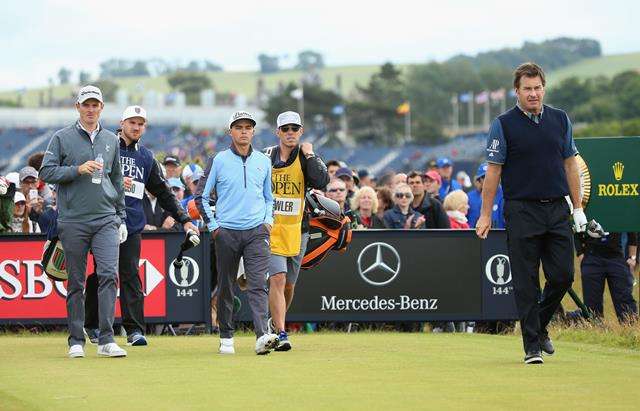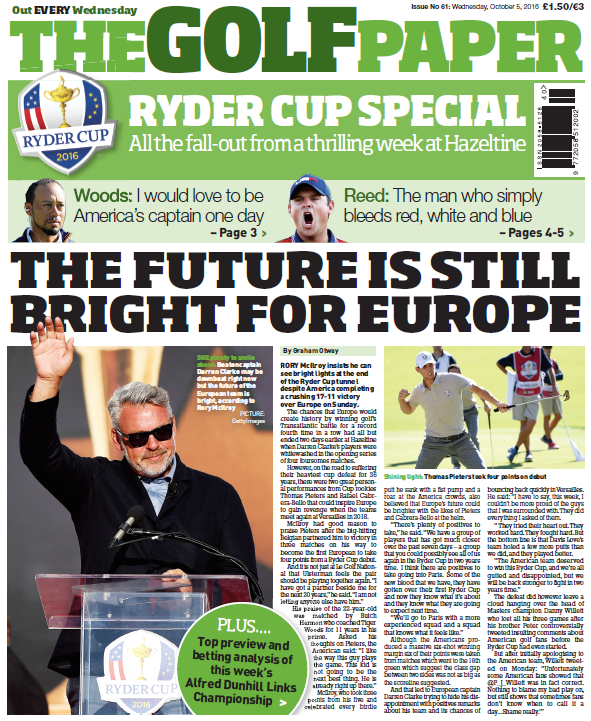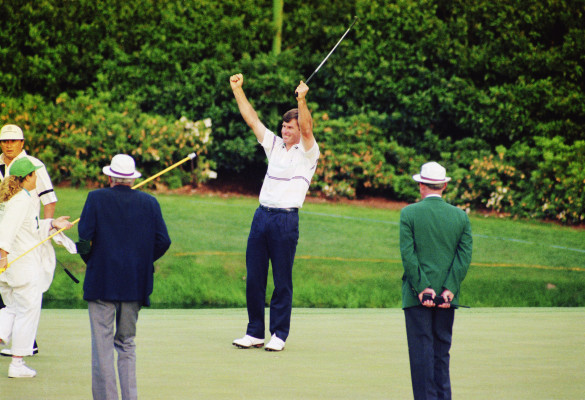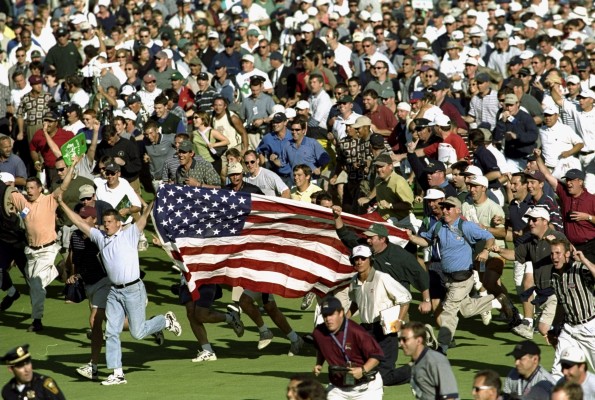Golf news
Johnson column: Why walk the walk if you can’t talk?

Sound of silence: Today’s pros don’t understand the benefit of a good old natter, but Sir Nick Faldo was the quietest (Photo by Getty Images)
by Martin Johnson
I tried hard not to feel too sorry for those unfortunate European Tour pros playing for peanuts in the unbearable heat of the Middle East over the weekend, but it wasn’t easy. ‘They don’t know what they’re missing,’ I thought to myself on Monday, when a fatted six iron left me dripping with mud and a conversation with my playing partner was abruptly terminated when his undercarriage gave way on the downhill walk from the eighth tee. The result was an involuntary attempt at the downhill slalom record, although the only damage was to his wallet when he got the dry cleaning bill.
Only when back at the clubhouse, reciting a tale that inexplicably seemed to induce more mirth than sympathy, did I realise that my partner’s impersonation of Franz Klammer meant we never got to the end of our conversation. Which was a riveting account of how his 26 year old central heating boiler had finally given up the ghost, and whether I knew of anyone cheap but reliable to install a new one.
The point being that I hadn’t fully appreciated how integral conversation is to a round of golf. Apart from, perhaps, when it’s cold. Conversation isn’t that easy when you’ve got your head permanently down, you can’t hear a thing anyway on account of the bobble hat pulled over your ears, and your teeth are clattering into each other like a pair of castanets. And, when the raindrops colliding with your face start to acquire the properties of hypodermic needles, an entire round might take place with just a single utterance. “Jeeeeeez”.
Otherwise, though, a good old natter is not only woven inextricably into the fabric of the game, it’s what makes it stand out from other sports. It’s hard to imagine, for instance, Steve Redgrave and Matthew Pinsent going full tilt in the coxless pairs and suddenly striking up a conversation about the wife’s bunion or wallpapering the lounge.
Golf is not the only sport, of course, played at the kind of leisurely pace that encourages conversation. Cricketers, for example, talk to each other all the time, although it’s often the unpleasantly personal kind of dialogue known as sledging. Golf, by contrast, rather frowns on you watching your opponent lining up a three foot putt, and saying: “Nasty distance that. Mind you don’t twitch it.” Although there’s nothing to stop you thinking it.
There are ways, however, of turning an apparently innocuous conversation on the golf course into a subtle form of sledging. Your opponent, for example, pulls out the driver on the tee, and you say something like: “I wish I had your confidence. If I’d have sliced it out of bounds like you did here last week, a wimp like me would be reaching for the three wood.” And if he wasn’t thinking about the out of bounds before you said it, he sure is now.
Likewise, when Tiger Woods was in his pomp and commentators talked about the intimidation factor as he walked on to the first tee, I often wondered why it never occurred to any of his playing partners to greet him with his real name, combined perhaps with a conversation stopper such as: “Morning Eldrick. I hear the Cadillac had a bit of run-in with a fire hydrant last week. No-one hurt I hope.”
The strange thing about pros, however, is that talking to each other is mainly confined to: “How do you do, I’m playing a Srixon 2 with three black dots” on the first tee, and a curt “well played” on the 18th green. Nick Faldo in his pomp went round in a world of his own, talking to no-one but Fanny, himself, and (in terms of commanding it to “go left” or “get down” or “be right”) his golf ball.
There are times, however, when you’d actually prefer to be playing with a Faldo than one of those for whom every shot represents an opportunity to say something so hilarious he runs the risk of rupturing his own spleen. You know the type. You accidentally knock your ball off the peg on the first tee and he immediately shouts “one!”
Your worst fears that you are about to spend the thick end of four hours in the company of someone incapable of leaving a single cliché in the bag, are further realised when he holes a 20-footer at the first and says: “Drive for show, putt for dough.” You, of course, leave your putt short, and brace yourself for the inevitable: “Never up, never in.” And when you slice your drive off the second tee into a thicket of gorse he says, as if you were somehow unaware of it: “I think that one may be in trouble.”
You’ve got to be mentally strong to play your best in circumstances such as these, and the most dramatic round of golf I’ve ever witnessed in terms of conversation affecting the outcome was in the 2003 Walker Cup at Ganton involving the GB&I’s Gary Wolstenholme, a man who could start an animated debate in a Trappist monastery, and the USA’s Casey Wittenburg, whose mouth only ever opened at meal times or in order to register a frown.
Wittenberg quickly went one up, but soon came under enormous pressure from Gary, who first softened him up by remarking how nice it had turned out since the early morning fog, and then landed one squarely to the solar plexus by switching seamlessly to the quality of the clubhouse lunch.
Wittenberg somehow hung on, mainly by limiting his responses to a shrug here, and a grunt there. But, early on the back nine, Gary finally broke him. “How’s your team hotel, Casey? “Room ok? Food to your liking?” You could see the man crumbling in front of your eyes.
Realising he was up against an opponent poised to inquire at any moment into whether he preferred bacon and egg for breakfast or waffles and maple syrup, Casey threw in the towel.
“Uh-huh”, he croaked wearily, and it was all over.
Exhausted, deflated, and eventually delighted that a 3&2 defeat at least meant he’d only had to endure 16 holes of Gary’s cheery banter, Casey escaped back to the blissful solitude of the locker room.
Tagged Nick Faldo








